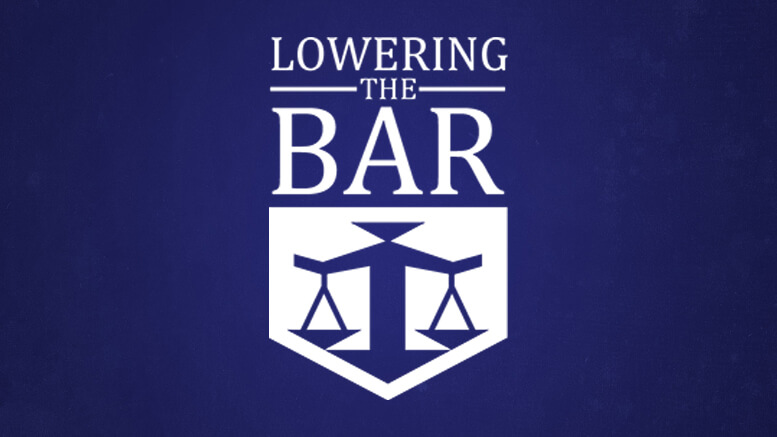Let's return to some prior stories and see how things have developed.
I. Escape Proves Temporary
In 2009, I reported that repeat offender Ronald Tackman had escaped from a holding area in Manhattan Supreme Court, where he was awaiting trial, an escape he accomplished by wearing a suit and walking out the front door. See "Criminal Defendant Escapes After Being Mistaken for Lawyer," Lowering the Bar (Oct. 1, 2009). An officer assumed Tackman was an attorney because of the suit, and not only failed to stop him but actually gave him directions to the lobby.
Turns out that escape only lasted a couple of days. Last week, having finally been forced to stay put long enough to stand trial, Tackman was sentenced to 28 years in prison. "He is a man who has spent his entire adult life committing crimes," said the prosecutor, and while he did take brief breaks between robberies that is more or less true. Tackman routinely used disguises during his crimes, and he sort of used one during the 2009 escape. According to the new report, Tackman was not entirely in attorney garb at the time, but "[t]he black socks he pulled over his prison-issued canvas shoes helped disguise his identity from court officers." Well, that and their apparent inability to look down.
II. Rush to Judgment Proves Fairly Accurate
In January of this year, an Ohio lawyer asked "that no one rush to judgment before hearing the other side" of the story, that story being the one in which he dropped his pants in front of two 19-year-olds and then claimed it was part of a "mentoring program." See "'Radical Times Call for Radical Measures,' Says Lawyer Who Dropped His Pants," Lowering the Bar (Jan. 21, 2011). He conceded his methods were unusual, but said he was not afraid to "do what it takes." He said there was more to the story that he would tell at the appropriate time.
Turns out there wasn't, really. Last week, the Akron Beacon-Journal reported that a judge had found the aspiring mentor mentally incompetent to stand trial for the incident, and that the state bar had gotten involved after finding out that the man was still representing at least one client despite that ruling. Presumably the success of the incompetency defense will have different results in the bar proceeding.
III. Plaintiff in Ear-Candling Suit Proves Nothing
Finally, in January and February of this year, I wrote about a Kansas case in which a woman was suing Wild Oats Markets for selling her a hollow candle that she intended to have somebody stick in her ear and then light on fire. See, e.g., "Fire in the Hole! More About Ear Candling," Lowering the Bar (Feb. 28, 2011). Surprisingly, having a fiery thing stuck in her ear resulted in a burned ear, for which she blamed everyone but herself.
Turns out that this case was actually tried to a jury last month, and that the plaintiff's claims against the market were dismissed after she rested her case. The court held that if anyone was negligent, it was the ear-candler, and that the plaintiff had also presented no evidence of an implied warranty. Her product-defect claim failed for the very good reason that she was the only witness on this issue (an "expert" was excluded), and she testified that she had "not formed a belief that the ear candle was defective in any way," something that does put a damper on a product-defect claim. It may be that the ear-candler was still liable, but as I said before, this is one of those cases that we can hope nobody wins.
We now return you to the current stream of nonsense.
